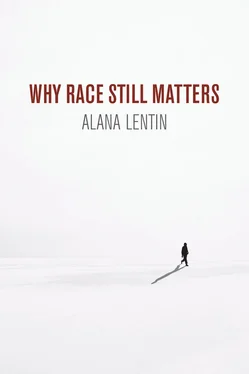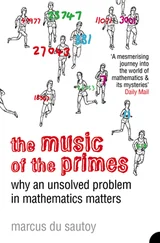Why Race Still Matters departs from a simple question that I have been asking myself for a long time: how do we explain race and oppose the dehumanization and discrimination committed in its name if we do not speak about it? Not speaking about race does not serve those who are targeted by racism. But it does benefit those who are not. Racial logic trades on the idea that there are profound forces that shape fundamental human differences – genetic, geographical, world historical, cultural, and so on – which the layperson cannot understand; a bogus idea that must be exposed. Talking about race does not mean accepting its terms of reference. Like any structure of power – capitalism, class, gender, heterosexualism, or ability – the reason we must speak about race is to attempt to unmask it in order to undo its effects. This is what I hope this book can offer.
But first, what is race? And what is racism? And how are the two linked?
I formulate race as a technology for the management of human difference, the main goal of which is the production, reproduction, and maintenance of white supremacy on both a local and a planetary scale. This definition is indebted to the work of many scholars, first and foremost the late cultural theorist Stuart Hall. For Hall, race is ‘one of those major or master concepts (the masculine form is deliberate) that organize the great classificatory systems of difference that operate in human societies. Race, in this sense, is the centerpiece of a hierarchical system that produces differences’ (S. Hall 2017: 32–3). Hall also offers us an understanding that, although race is about the ‘inscription of power on the body’, it has no meaning as an actual biological or physical distinction that exists in nature (2017: 47). Moreover, the biological understanding of race is only one way in which the racial distinction is constructed; geographical, religious, cultural, and, only lastly, biological or genetic explanations of why Europeans theorized that they were superior to, and should therefore dominate, non-Europeans were all used to make of race the ‘central term organizing the great classificatory systems of difference in modern human history’ (2017: 33). Therefore, as Alexander Weheliye writes, it is more conducive to conceptualize race as a set of what he calls ‘racializing assemblages’, a series of ‘discourses, practices, desires, infrastructures, languages, technologies, sciences, economies, dreams, and cultural artifacts’ that, together, ensure the maintenance of political structures and institutions in ways that bar ‘non-white subjects’ from being considered fully human (Weheliye 2014: 3).
Weheliye’s concept of assemblages is in part indebted to Stuart Hall’s theorization of race as an articulation, or a series of linkages between different structures of dominance. Therefore, we need to think of other structures of power – capitalism, gender, sexuality, class, and ability – as working through race, and vice versa. As systems that produce oppression, ranking, exclusion, and – to use Gilmore’s formulation again – the possibility of ‘premature death’, these, like race, were produced within specific historical contexts. At a general level, the categorization and ranking of humans into putatively natural groupings along racial, gendered, and classed lines grew in necessity at the start of the modern era, in Europe. As Robin Kelley puts it, in his foreword to Cedric Robinson’s book on the evolution and development of racial capitalism, Black Marxism , race is ‘rooted in premodern European civilization’ (Kelley 2000: xiii). However, both race and capitalism, developing together and inextricable from each other, matured within the context of European colonial domination over the majority of the world. Therefore, although with the birth of the modern nation-state in Europe racism and nationalism entered into a reciprocal relationship (Petitjean and Balibar 2015), race as a regime of power is ‘colonially constituted’, as Barnor Hesse explains (Hesse 2016). What Hesse means by this is that, ultimately, race is about the delineation not only of whites from non-whites, but of the essence of Europeanness from that of non-Europeanness.
Therefore, race is above all else a project of colonial distinction and a system of legitimation to justify oppressive and discriminatory practices. This unfurls internally, within national societies, for example producing eugenicist hierarchies of the ‘deserving’ and the ‘undeserving’ poor (Shilliam 2018). Racial logic is also at work in the false idea that there are ‘enclaves’ or ‘ghettoes’ of ‘self-segregating’ migrant communities that disrupt the possibility of social cohesion. It underpins the conspiratorial notion that ‘rootless, cosmopolitan elites’ are responsible for a negative influence on society, to the detriment of the ‘indigenous’ inhabitants, as has been argued by Paul Embery, a former fire-fighter on the right wing of the British labour movement, mobilizing old antisemitic tropes (Cartledge 2019). Externally, it plays a role in reproducing narratives of European progress vis-à-vis the supposed poverty, or non-existence, of Indigenous and majority world languages and knowledges. As one philosopher colleague once told me, unironically, ‘There are no non-European philosophies!’ It creates the notion of developed and developing worlds. It casts the white, the western, and the European – each co-constitutive of each other – as neutral and universal, while everything that cannot be captured by these categories is cast as specific only to the time and place in which it is produced, never serving as a global exemplar.
The central ruse or illusion created by racial logics is that everything in the world has a fixed or natural place. That is why extreme racial regimes like Apartheid, Nazism, or Jim Crow punished ‘race-mixing’. However, to fully understand why race continues to have power, even after these systems of rule have been abolished, we must understand why it needed to be legislated for in the first place. Race, having no bearing in reality, had to be invented and needed to be constantly secured. For example, a panoply of mechanisms and practices was needed to pin down the US institution of slavery and to attach an inferior racial status to Black people’s bodies, before criminalizing them as a group. These included branding, plantation rules, black codes, identity papers, lantern laws, dress codes, and runaway notices. Simone Browne describes the passage of the lantern laws in seventeenth-century colonial New York city, which ruled that the black body remain illuminated at night (Browne 2015; see also Garcia-Rojas 2016). These laws not only introduced practices of surveillance which Black people remain subjected to today, but they also created and policed ‘racial boundaries’ that still cohere in the common idea that Black people pose a threat to public and individual safety. How else to explain the practice of reporting Black people to the police for simply existing in spaces it is not deemed they should be in? As found in the coronial inquiry held into the death in police custody of Aboriginal grandmother Tanya Day in September 2019, she had been arrested for ‘being unruly’ because she had fallen asleep on a train while on her way to visit her pregnant daughter (Human Rights Law Centre 2019). She died alone in the ‘lock-up’.
Police powers and legislation, such as segregation laws, or, to take the aforementioned much more recent example, the ban on the hijab in French schools, are deemed necessary because race is above all else an idea in search of reassurance (Wolfe 2016). It is on such shaky conceptual ground that it needs to be constantly filled with content, fed like a hungry animal. This is what makes it what Stuart Hall calls a ‘sliding signifier’. Its slipperiness makes it difficult to pin down. While we argue about just what defines race or whether this or that event or arrangement can really be racist, race is doing its job of, as Hall put it, sidling ‘around the edge of the veranda and climb[ing] back in through the pantry window’ (S. Hall 2017: 37). Race continues to matter because it is in a continual process of reinvention.
Читать дальше












